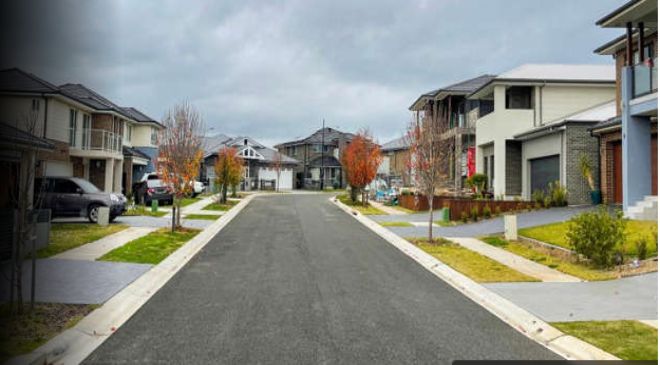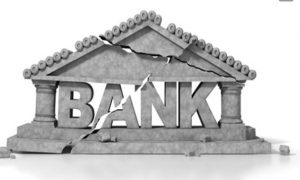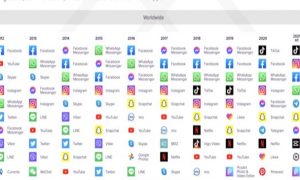If you’re buying a home right now, chances are you’re also seeing some daunting headlines about inflation and record-high home prices. You might also be looking at your bank account and wondering how you’ll pull this off. Wages aren’t increasing at a pace that can help renters become homeowners: A recent Bankrate survey shows that the top reason renters don’t own a home is not having enough income.
There’s no question it’s a challenging time to buy a home. However, there are some areas of the country where the cost of living makes budgeting a bit less stressful and becoming a homeowner a bit more doable, even as the pace of inflation feels like a runaway train.LightbulbKey housing and inflation statistics
- Annual inflation hit 8.3 percent in the Consumer Price Index (CPI) in April 2022, a slight pull-back from March, but still intensely high. The Federal Reserve typically wants to keep the pace of inflation at an annual rate of 2 percent.
- Home prices have soared by more than 20 percent year-over-year. Between March 2021 and March 2022, home prices increased by nearly 21 percent, according to CoreLogic, and some markets are especially hot. Tennessee, Arizona, Florida and Nevada have all seen recent price increases of over 26 percent.
- The median price of a home has surged over the past decade. The median sale price of an existing home in 2012 was $154,600, according to the National Association of Realtors (NAR). Since then, it’s risen to $357,100.
- The average first-time homebuyer is 33 years old. NAR data shows the average first-time buyer is 33 years old, and they’re typically putting 7 percent as a down payment.
- Nearly 30 percent of buyers paid more than the asking price. In today’s competitive market, many buyers are paying above the list price, NAR data reveals.
- Thirty percent of Americans believe it’s a bad time to buy a house. The data from Gallup indicates a record-low sentiment about those thinking about entering the market.
- The number of homes for sale are down 9.5 percent year-over-year. There simply aren’t enough homes on the market, NAR reported in its March 2022 sales update.
- The construction industry needs to hire 61,000 new workers every month. The housing shortage is intersecting with a labor shortage. According to the Home Builders Institute, without adequate hiring, there’ll continue to be serious headwinds for new-home construction.
Top 10 housing markets based on cost of living
To find the most affordable place to call home, let’s take a look at the 10 states with the lowest costs of living based on the Missouri Economic Research and Information Center’s analysis of data from the Council for Community & Economic Research’s most recent composite cost of living index. The index includes data on food, housing, utilities, transportation, healthcare and miscellaneous goods and services.
- Mississippi: Housing is by far the cheapest in Mississippi, and it’s also inexpensive to commute to and from work here: The transportation ranking is the lowest of every state on the list.
- Kansas: While utilities and healthcare cost slightly higher in Kansas, relatively affordable groceries and housing make living in The Sunflower State a place where your money has a better chance to blossom.
- Alabama: Located next door to the most affordable market, Alabama’s housing is also very cheap compared with the rest of the U.S. Even in bigger cities, the state maintains an appeal for homebuyers on a budget: The median sale price of a home in Birmingham is just $235,000 as of April 2022, according to data from Redfin.
- Oklahoma: Oklahoma is affordable from every angle – none of the six cost categories are above a 100 rating, meaning they’re relatively inexpensive. A cheaper cost of living doesn’t sacrifice quality of life, either: Oklahoma City ranked fourth on Bankrate’s best places to live in the U.S.
- Georgia: If you’re concerned about rising gas and electric bills due to surging energy costs, Georgia has good news: Utilities are nearly 10 points below the 100-point average. Housing-wise, though, you’ll need to explore more rural parts of the state if you want to save. Prices in Atlanta have increased by more than 14 percent in the past year, Redfin data from April 2022 shows. Prices in Athens have surged by more than 24 percent in the same time frame.
- Tennessee: Getting around in Tennessee is particularly affordable: The state’s inclusion in these 10 markets is largely due to its low transportation costs. Like Georgia, prospective homebuyers on tight budgets will want to explore more rural parts of the state since urban markets like Nashville and Knoxville are both seeing significant price increases for housing.
- Missouri: Of the 10 states on the list, Missouri’s cost of housing is the highest. However, it’s still relatively affordable compared to the U.S. as a whole. The state’s healthcare and transportation costs also help make The Show-Me State less expensive.
- Iowa: Iowa’s housing costs are the primary driver behind the state’s place on this list. Even in Des Moines – the state’s biggest city – buying a home is still manageable: The median sales price is $190,000 as of April 2022, according to Redfin, making for a modest 5.6 percent year-over-year increase.
- West Virginia: West Virginia scored the lowest costs in two areas: healthcare and utilities. While many markets around the country are dealing with a serious housing supply shortage, the state had two months of available inventory as of April 2022, Redfin reports.
- Indiana: You won’t pay too much to fill your fridge in Indiana thanks to the third-lowest grocery costs on this list. While housing costs in The Hoosier State are higher than most other states here, everything else in Indiana manages to check the affordable box. If you can find the right place in Indianapolis, you’ll also be able to call one of Bankrate’s best places to live home.
Cost of living impact on mortgage rates
A lot of factors impact the movement of mortgage rates, and the rising cost of living does play a small role. Since rising inflation lowers borrowers’ purchasing power, lenders consider it as they adjust their rates.
However, cost of living is ultimately further down on the list of what impacts mortgage rates. Federal Reserve decisions and big economic news about unemployment numbers or GDP growth are much bigger factors. Additionally, you have a say over your mortgage rate with your credit history, debt-to-income (DTI) ratio and other personal finance indicators.
FAQs on cost of living
- What was the cost of living increase for 2021?To get an idea of how much the cost of living is increasing, the best place to look is the government. The Social Security Administration makes adjustments to its benefits based on movements in the CPI. For 2021, the increase was 5.9 percent.
- What is the cost of living increase for 2022?The cost of living increase hasn’t been determined for 2022 yet. The SSA will release the final figure in October.
- What is causing inflation?There are a wide range of factors contributing to the surging inflation in today’s economy, and much of it can be traced back to the pandemic. Lockdowns have fueled supply chain challenges of everything from baby formula to semiconductor chips. Many workers have also reevaluated their careers, quitting jobs and leading to even bigger supply chain issues – a shortage of truckers, for example, means that fewer drivers can get goods from point A to point B.It’s not just goods, though. Rising energy costs due to the Russian invasion of Ukraine and other factors are leading to higher utility bills, too.
Bottom line
There’s (potentially) good news and bad news: A UBS analysis proposes that inflation might have peaked in March 2022, so price increases could start to look less overwhelming over time. Buying a home is still going to be pretty tough, though. While prices are not expected to accelerate at the record-breaking pace of the past two years, part of that is due to the fact that borrowing money isn’t going to be so cheap anymore. After mortgage rates hovered near record low rates throughout 2020 and 2021, they are currently above 5 percent, with some experts projecting that they will cross the 6 percent threshold later this year.
Understanding what’s next for inflation and interest rates is challenging, even for economists. Rather than trying to study every move in the market, take a look at your budget and explore more affordable places to build equity as a homeowner. It’s also worth considering whether you should buy a house now or wait.













































